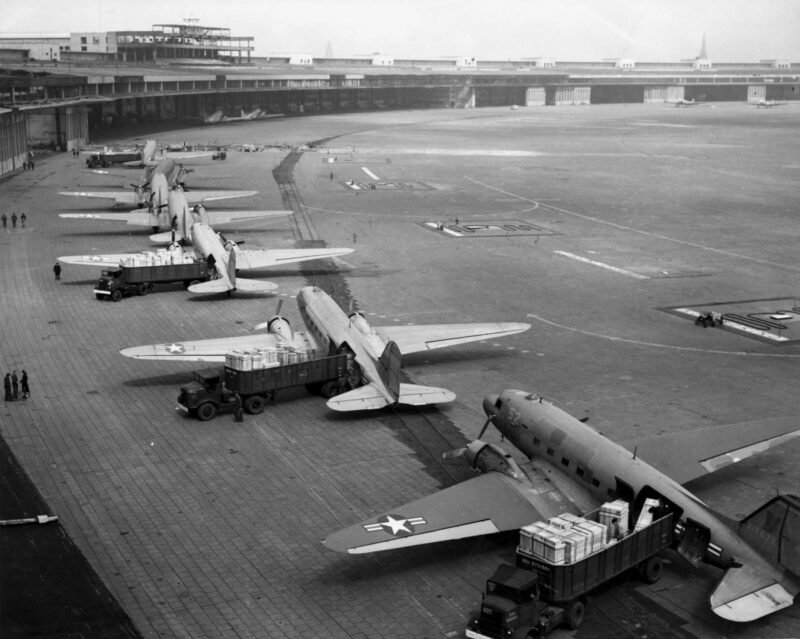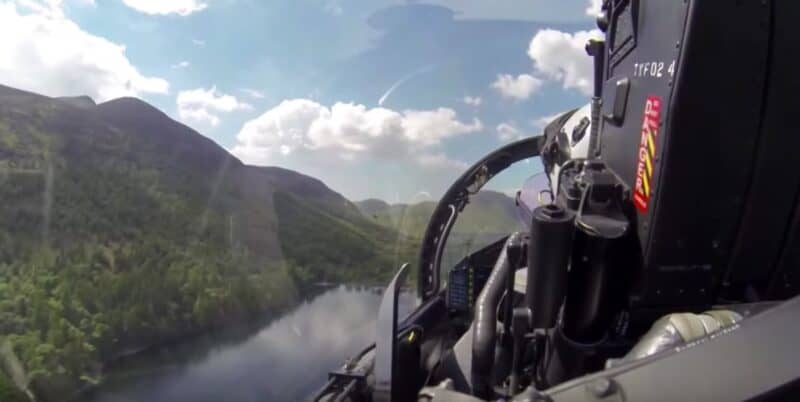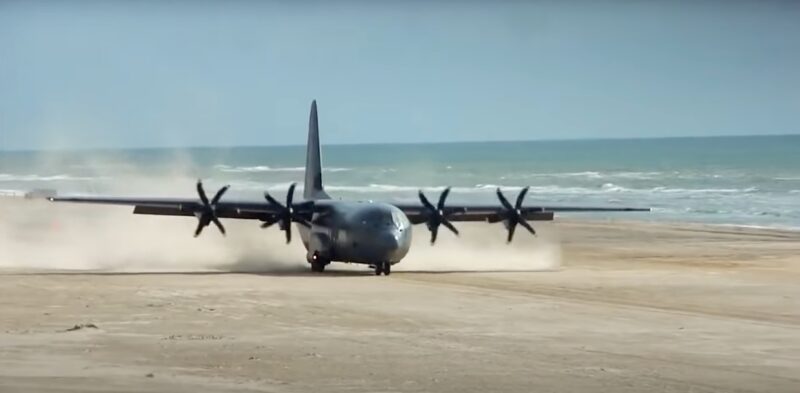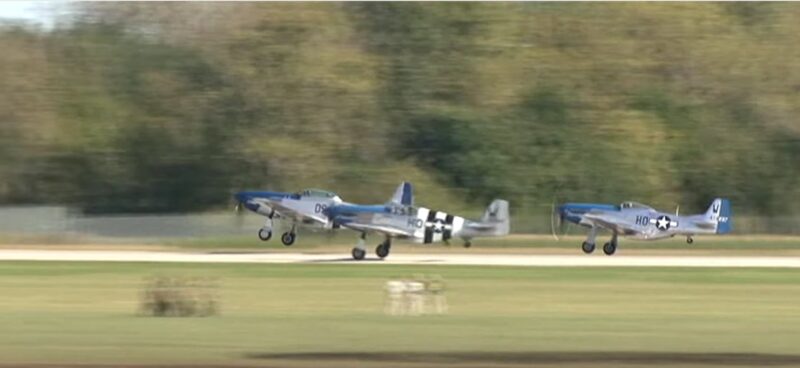Peace the Old Fashioned Way! B-52s Create Smokey Mess With Minimum Interval Takeoffs
The World’s First Drone Flew For The First Time 98 Years Ago Today
The world’s first drone was a crude cruise missile that could hit a target up to 75 miles away.
Germany’s V-1 “Buzz Bomb” was an early version of a cruise missile, but not the first! In 1918 during World War I, the US Army contracted Charles Kettering of Dayton, Ohio to design and build an “aerial torpedo” with the capability to strike targets up to 75 miles away, flying at a speed of 50 mph. Kettering hired Orville Wright as his aeronautical consultant for the development of what would be called the “Kettering Bug.”
The biplane design looked like a big model airplane, 12.5 feet long with a wing span of 15 feet. It was powered by a 40-horsepower, four-cylinder De Palma engine manufactured by Ford Motor Company. The airframe was made of wood laminates and paper papier-mâché. The wings were covered with cardboard.
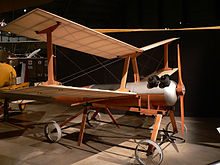
The aircraft was launched from a four-wheeled dolly-and-track system similar to that used by the Wright brothers for their first successful flights at Kitty Hawk.
The challenge was to be able to launch the aircraft and have it travel to, and strike, a specific target carrying 180 pounds of explosive. The challenge was to be able to control the aircraft’s track to the target. The solution was ingenious.
Prior to launch, technicians would plot the precise distance to the intended target and also determine the aircraft’s heading based on wind direction and airspeed. This information was used to determine the number of engine revolutions required to travel to the target.
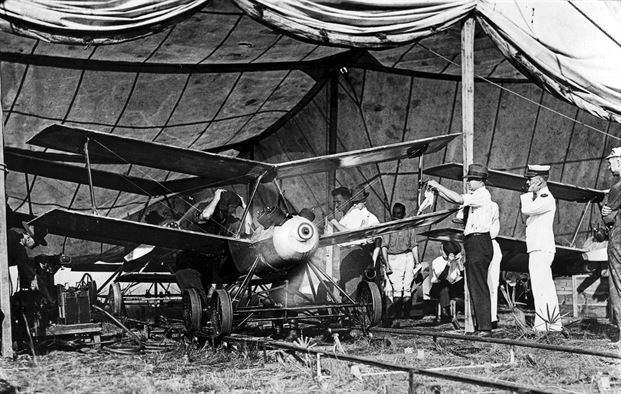
Once launched, a small onboard gyroscope guided the aircraft toward its destination. To maintain altitude and direction, the system used a pneumatic/vacuum system, an electric control system, and an aneroid barometer/altimeter.
When the revolution counter reached the programmed value, a cam shut off electrical power to the engine. Another control retracted the wing-attachment bolts, releasing the wings. At this point the craft became a ballistic missile falling towards its target. The 180-pound explosive payload detonated upon impact.
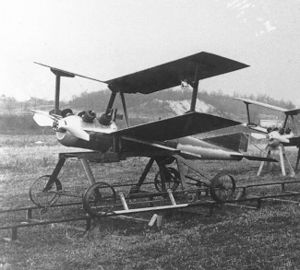
On its first test flight in Dayton, Ohio, the aircraft took off and climbed too steeply, stalled, and crashed. Adjustments were made and subsequent flights were successful.
Toward the end of World War I, the Army conducted a total of 24 test flights, seven of which were successful.
Although the Army spent some $275,000 developing the early drone, the Kettering Bug was never used in combat. Approximately 45 “Bugs” were produced. The existence of the Kettering Bug was kept secret until the beginning of World War II.
A full-scale replica of the Kettering Bug is on display in the “Early Years” Gallery of the National Museum of the United States Airforce.
And we thought drones and cruise missiles were a modern invention!
Tu-160 Blackjack is One Big, Mean, Killing Machine
An uncanny resemblance to the United States Air Force’s B-1 Bone.
75 Years Ago, We Beat The Soviets With Cargo Planes
September 30 marks the 75th anniversary of the end of the Berlin Airlift, historically the first major showdown of the Cold War between the Soviet Union and the West.
World War II hand ended in 1945, and the Allies—the United States, the United Kingdom, France and the Soviet Union divided Germany into four occupation zones. The Soviets controlled the eastern portion of Germany, including the city of Berlin. Although isolated in the Soviet sector, the city was also subdivided into occupation zones. Initially, the Soviets Permitted highway and railroad access to the city. Stalin fully intended that Germany would become a part of the Soviet Union and blockaded rail and road access to Berlin, cutting off critical supply lines of food and fuel.
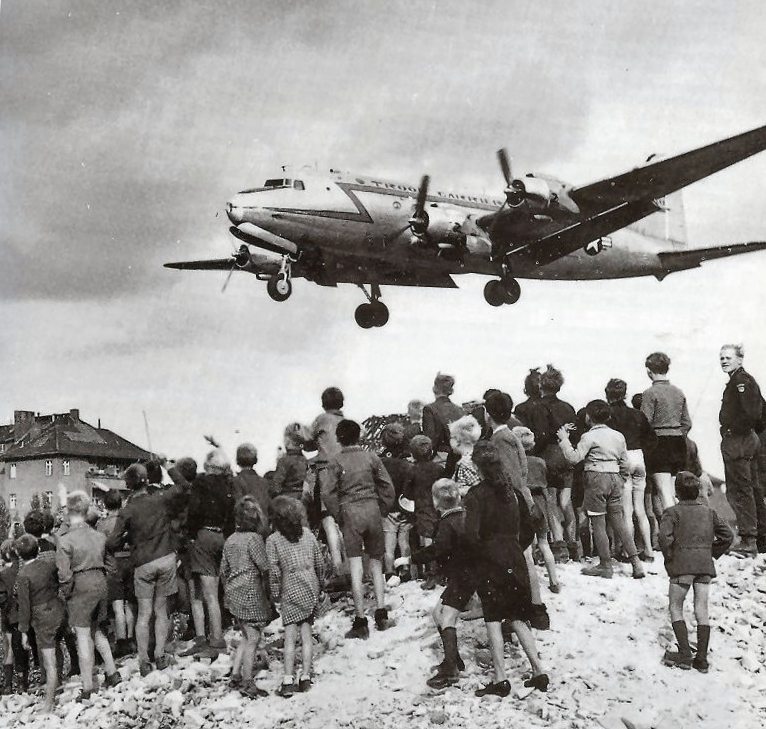
Three air corridors remained open, and in June of 1948, the west initiated “Operation Vittles” (the United States) and “Operation Plainfare” (United Kingdom), delivering food, fuel (coal and gasoline), and other essentials. Russia did not believe the airlift could adequately supply the city of Berlin expecting the city would submit to Soviet rule. The Soviet Union was more focused on its post war recovery, and did not challenge the airlift. Additionally, the western allies were still strong, and had demonstrated the use of nuclear weapons, and the Soviets were not prepared for direct conflict.
The American government, using 1,990 calories as a daily minimum per person and 2 million people in Berlin to feed, set a daily minimum of 1,534 tons of food stuffs including flour, wheat, meat and fish, dehydrated potatoes and vegetables, sugar, salt, coffee and powdered milk. Additionally, for heat and power, 3,475 tons of coal and gasoline were required daily.
The U.S. began the airlift with C-47 (DC-3) aircraft and then added C-54 (Douglas DC-4s). Because of the steeply angled floor of the tail-wheeled C-47, however, it took up to 30 minutes to unload a C-47, while a C-54 could be unloaded in as little as ten minutes. Several airports were limited to C-54 aircraft, which further accelerated the flow of supplies. Many other aircraft were also used, including Sunderland flying boats landing

The high volume of aircraft arriving in Berlin created significant traffic flow challenges, but by the end of the first year, aircraft were landing somewhere at Berlin airports every thirty seconds.
The high volume of aircraft operations and limited air traffic control created a hazardous operating environment. There were accidents, especially when poor weather caused landing accidents and the danger of midair collisions.
The Soviet blockade of Berlin ended in May of 1949, but airlift flights continued to allow the city to build up a reserve of supplies. Finally, the Berlin Airlift was officially ended on September 30, 1949.
The last Berlin Airlift flight showing the total tonnage delivered to Berlin during the airlift.
The Berlin Airlift officially ended on 30 September 1949, after fifteen months. In total the USA and United Kingdom delivered 17,835,727 tons, nearly two-thirds of which was coal, on 278,228 flights to Berlin. The Berlin Airlift aircraft flew more than 92 million miles in the process, almost the distance to the sun. At the height of the Airlift, one plane reached West Berlin every thirty seconds.
Note there is a documentary video at:
https://en.wikipedia.org/wiki/File:Berlin_airlift.ogv (British production)
[shopify embed_type=”product” shop=”custom-model-planes.myshopify.com” product_handle=”douglas-c-54-skymaster-1-72-scale-mahogany-model” show=”all”][shopify embed_type=”product” shop=”custom-model-planes.myshopify.com” product_handle=”douglas-c-47a-skytrain-silver-1-72-scale-mahogany-model” show=”all”]
These Air Traffic Controllers Are Having A Bad Day
“Actually, maybe you should switch to decaf”
This video clip catches a rare behind-the-scene look at the dark side of aviation…attitude! Sure, most everyone keeps a running dialogue in the quiet of their own head of what they’d LIKE to say, but they don’t actually say it. Usually. Unfortunately, sometimes an open mic is left on, and that’s when the fun really begins! You just don’t hear pilots and air traffic controllers calling each other dreaded 4-letter words very often these days. Here are the 3 crazy situations you’ll see in this video.
The job of a pilot and the job of an air traffic controller are both very stressful. Combined with fatigue, parks occasionally fly. In Atlanta, we hear a ground controller attempting to help out a Delta flight that is about to join the wrong taxiway. Delta responds calmly, with a voice reserved for warding off grizzlies.
One pilot complained that he happened to have a lady with him at the moment, and that he found the words of the air traffic controller offensive. The controller replied by announcing that the comments had not been about the lady, but about someone else. Of course the comments were about someone else! Nobody knew the lady was there until the pilot mentioned it. It didn’t make the already bad situation any better.
Every once in a while you get a wiseguy… and I can’t tell if the Saudi pilot ‘just not getting it’ was baiting the controller. I mean, when there are only 9 possibilities and you guess 11 times—INCORRECTLY—that has to be on purpose, right?
Bottom line is that controllers do a hell of a job to keep people safe. Mistakes and bad days happen. We’re just glad that these pop-offs are relatively rare.
[youtube id=”Be7tzLWQBC8″ width=”800″ height=”454″ position=”left”]
Ride Along as Typhoons Blast Through World Famous Mach Loop
Cockpit view lets you feel the raw excitement of low level flight.
Experience the emerald green of British landscapes in this high-octane clip! This video footage, uploaded on May 13th of 2014, was filmed from the back seat of an RAF Eurofighter Typhoon, being flown by display pilot Jamie Norris. You get to hangout on board Europe’s premiere tactical combat platform, as they soar, swoop and just plain sizzle.
Jamie calmly walks us through his pre-flight checks, and gently guides his agile craft into the air. He rejoins on “lead,” (the other Typhoon) as they transition from high altitude to the low level environment. We hear him announcing that the weather is good, and the valley is clear. And then we are off for the races! Flying at less than 250 feet above the ground, both jets have to pull impressive amounts of G forces in order to remain within the safe confines of the valley. They are about as low as you’d dare to go, at speeds in excess of 450 knots! So low to the ground that you can plainly see the cars in people’s driveways and the fences that surround their yards. And maybe people waving…at the sound of freedom coming from those twin exhausts.
But why, you ask, would fighters be down in the weeds?
Great question—it’s about infiltration and avoidance. Up high, radar has a clear return. Low level, especially in mountains, there’s too much clutter in the way (thank you terra firma!). Plus, getting a straight shot at a twisting, bucking Typhoon? Fuhgeddabouttit!
The Eurofighter Typhoon is an aircraft with strike force capability. It is in service with six nations – the UK, Germany, Italy, Spain, Austria, and Saudi Arabia.
[youtube id=”kT7qrYi8R_M” width=”800″ height=”454″ position=”left”]
C-130 Hercules Goes On A Trip To The Beach
C-130J Hercules Lands on Beach
We’ve seen and posted some pretty amazing feats of airlifters. As amazing as the C-17 or C-5 jets are, there is something really special about the Herc. With its four fans of freedom that allow it to takeoff and land in very short distances (even an aircraft carrier!), and its landing gear that means its displacement is uniquely light on landing surfaces.
This video footage features a pilot being trained to land a C-130J Hercules on an unusual surface…a beach. We think the footage is shot along various beaches on the shores of western Denmark, known as Vejers Strand.
The C-130 is able to land on such austere surfaces for a couple of reasons. The first is that the high wing, high lift aircraft is well suited for slow-speed landings and short takeoffs. Additionally, the gear is designed such that the weight displacement on the C-130 on a per-tire basis is actually relatively low. This means that the C-130 is less likely to create deep ruts or destroy austere runways surfaces like compacted sand or dirt.
[youtube id=”VUMHj4CReU8″ width=”800″ height=”454″ position=”left”]
About the C-130 Hercules
The C-130 Hercules is a four engined turboprop military transport plane, designed and built by Lockheed. The aircraft is known for being able to use unprepared runways for takeoffs and landings. It was originally designed to transport troops, cargo, and medevac equipment. It has also been used as an AC-130 gunship, for airborne assault, for search and rescue efforts, for scientific research and support, for weather reconnaissance, for aerial refueling, aerial firefighting, and maritime patrol.
History of the Herc
The C-130 took its maiden voyage on August 23rd of 1954, and was introduced into service that same year. As of 2015, more than 2,500 of this type of aircraft have been built, and the aircraft is still in production today.
The Lockheed C-130 Hercules is the main aircraft of Air Forces around the world. Primary users of the C-130 are the United States Air Force (USAF), the United States Marine Corps, the Royal Air Force (RAF) and the Royal Canadian Air Force.
The most recent variant of this aircraft is the Lockheed Martin C-130J Super Hercules.
In 2007, the Lockheed C-130 Hercules became the fifth aircraft to celebrate 50 years of continuous service with its original buyer, which was, in the case, the United States Air Force.
The Moment Over 20 P-51 Mustangs Met Up For An Epic Flyover
There Are Fly-Ins and Then There Are FLY-INs!
It’s hard to believe that 2007 was more than a decade ago already. Back then it wasn’t as rare to see men and women from the Greatest Generation join events to share their stories. This video harkens back to a time not THAT long ago where WASPs, Tuskegee Airmen, and WWII vets saw over 20 P-51s take to the skies with the distinctive drone of their powerful engines. You’ll see no less than 20 P-51 Mustangs take off, two or three at a time, to fly in formation over the Gathering of Legends and Mustangs at Rickenbacker airport in Columbus, Ohio. The event took place between September 27th and September 30th of 2007.
[youtube id=”K9CoBMlOLi4″ width=”800″ height=”454″ position=”left”]
This made-in-USA video footage was captured from the top of a twelve-foot high photography platform, with a prime seat to catch all the Mustang action. The awesome video clip, uploaded on January 5th of 2011, was produced by Steve Kauzlarich.
About the P-51 Mustang
The P-51 Mustang is an American long range, single seat, fighter bomber plane. Designed in 1940 by North American Aviation, it took ts maiden voyage on October 26th of 1940, and was introduced to the Royal Air Force (RAF) in 1942. The P-51 Mustang has been used in World War Two, the Korean War, and other conflicts. Its primary users have been the United States Army Air Force (USAAF), the Royal Air Force (RAF), the Chinese Nationalist Air Force, and others. Since its introduction, more than fifteen thousand P-51 Mustang aircraft have been built. The per unit cost of a P-51 was about $51,000, way back in 1945.
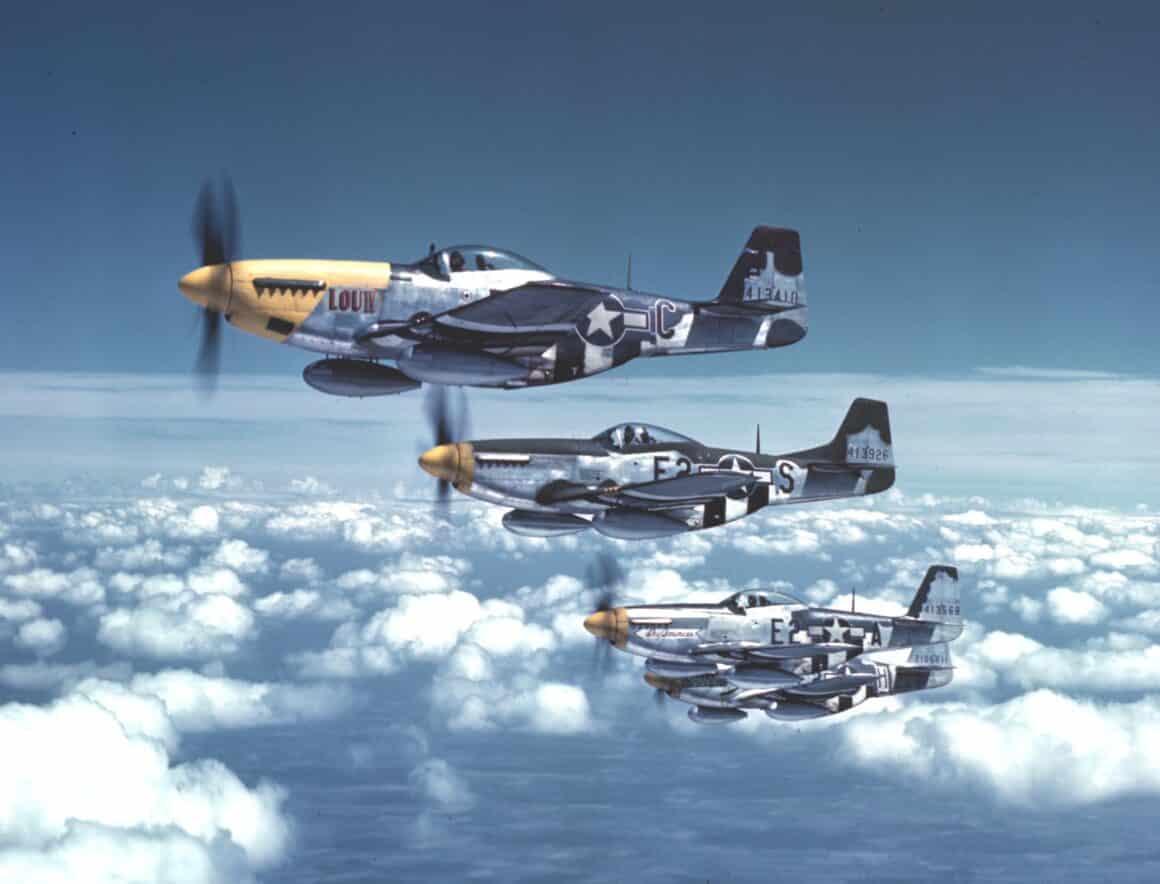
The Mustang was originally designed to use an Allison V-1710 engine, but they were later outfitted with Rolls Royce Merlin engines, which improved performance at altitudes above 15,000 feet. The ultimate version of the aircraft, called the P-51D, was powered by the Packard V-1650-7 engine, and armed with a set of six .50 caliber Browning machine guns.
Rare Air: Incredible F-4 Phantom Helmet Cam Departure
We won’t see scenes like this much longer!
Attention Avgeeks! There are only a few more months to see active US Air Force F-4 Phantoms flying at airshows. That’s right. In less than three months, the QF-4 program will be gone forever. With the expiration of the QF-4 program, that means that all associated heritage flights at airshows will also end. According to AirshowStuff, the final flying performance of the QF-4 will be on December 20th at Holloman Air Force Base with 4 other appearances between now and then.
[youtube id=”2GRIK8RQgFM” width=”800″ height=”454″ position=”left”]
Even if you can’t make it to see them in person, you can still be awed by watching them online. Our friends at AirshowStuff also shared some exclusive F-4 Helmet Cam footage with us. In an era of glass cockpits and multi-function displays, it’s so retro to see some old steam gauges in the Vietnam era cockpit. It’s also refreshing to see some precise stick and rudder flying powered by two afterburning General Electric J79s.
The rare footage came features an F-4 formation departure from the AirVenture Airshow at Oshkosh. On departure, you’ll see a high speed pass, photo pass, and dirty pass. That’s the old ‘mini demo’ routine they used to do when they were part of the Heritage Flight program. After departure, they climbed straight out after the dirty pass and transitioned to cruise.
What’s Up with the Rollercoaster Takeoffs from Orange County?
Orange County’s unique departure profile
If you’ve ever had the pleasure (or perhaps the terror) of taking off in a commercial plane from Orange County at John Wayne airport, you’ll know that it is a takeoff unlike any other. Just seconds after liftoff, you will feel your stomach drop as the airplane does a very abrupt pushover. This pushover, similar to what you might feel on a rollercoaster or perhaps a hilly backcountry road, will make you light in your seat. You might even feel yourself being restrained by your seatbelt.
The next thing that you will notice is that the sounds in the cabin will change. Specifically, they will get much quieter. The roar of the engines that accompanies all takeoffs will diminish dramatically. You will sense that the nose of the aircraft has dropped significantly. The incline, or what pilots call the “deck angle” will have gone from the usually steep angle used for most takeoffs, to one that is barely distinguishable from level flight. And all this will seem to be happening much too close to the ground.
Finally, you may become aware of an annoying thumping that you feel in your chest. Don’t worry, that’s only your heart pounding.
You may think that this is it…game over…and wonder if there’s enough time to squeeze a goodbye text to your loved ones before plunging into the Pacific Ocean. But you should rest easy. You are not going to die (at least not today). What you have just experienced is known as a noise abatement takeoff. They occur hundreds of times weekly at John Wayne and are an FAA approved and in fact government mandated maneuver. That’s right; pilots and airlines will be fined if they don’t perform this type of takeoff.
[youtube id=”eFkbu0kE-YM” width=”800″ height=”454″ position=”left”]
Why do they fly a departure like that?
So why, you may ask, are you being subjected to an experience that should probably be featured at the nearby Disney theme park? Well, as I mentioned above, noise. Noise and of course politics. For John Wayne airport is the only airport which mandates such a drastic noise reduction profile. And as legend has it, the Duke himself, the airport’s namesake, had a hand in getting those restrictions put in place.
The departure path from John Wayne airport flies almost directly over Newport Beach. As you may know, Newport Beach is a very well-heeled community. And while I’m not going to make judgements on wealth accumulation, one thing wealthy people are good at is getting things done. Starting with the arrival of the first turboprops and jets in the 1970s, community activism followed soon thereafter. Eventually, lawsuits were filed, and the restrictions were put in place.
A little history about John Wayne Airport
John Wayne Airport dates back to 1923 when a landing strip was first opened by a man named Eddie Martin to host a flying school. Then known as Martin Field, Orange County assumed ownership in 1939 with the airport becoming to be known as Orange County Airport. The name was changed to John Wayne Airport in 1979 in honor of actor John Wayne, a nearby resident, upon his death.
Noise restrictions at the airport date back to 1985 when a local group representing residents who lived under the departure path sued the county. The resulting settlement implemented noise regulations and curfew requirements, which remain in force today. Noise meters are deployed along the departure path to measure the sound footprint of each departing aircraft. Those restrictions are unique in being some of the first of their kind, and also just about the only of their kind.
In 1990, Congress, fearing that many localities could eventually hamstring the growth of aviation by implementing their own patchwork of noise restrictions, passed the Airport Noise and Capacity Act which outlawed curfews at airports. John Wayne was grandfathered in, however, due to the original lawsuit being filed in 1985.
Why the Rollercoaster?
So knowing why airplanes have to fly quietly, you may be wondering about the “how”. And specifically, you might be wondering why airliners don’t just use less thrust from the get-go instead of the roar followed by the pushover and silence. Without getting too technical about takeoff performance, much of it comes down to the runway length at John Wayne airport, or to be more specific, the lack of runway length.
The longest runway at John Wayne is less than 6000 feet long. At a scant, 5701 feet to be precise, it is one of the shortest runways if not the shortest runway in the nation from which large commercial aircraft fly.
It is the nature of gaining flying airspeed in a very short distance which necessitates the full power takeoff. Once airborne, but before the flaps are retracted, the aircraft reaches a “cutback” altitude of about 800 ft. It is here where the engines are throttled back either manually or by the auto-throttles to a thrust which meets the minimum required climb gradient of about 2.5%. Less thrust also means a shallower climb angle, hence the pushover.
Once beyond the noise sensitive area, or about six miles after takeoff, the aircraft resumes its normal climb profile using full climb thrust.
Are noise abatement departures more dangerous?
I suppose that depends on your definition of the word dangerous. Any time you monkey around with large power changes on a turbine engine, you increase the odds of something going wrong. In fact, many engine failures occur not on initial thrust application such as takeoff, but rather on a large thrust reduction. That said, the odds of that ever happening are infinitesimal. Still, it isn’t unknown for engines to fail as was dramatically illustrated by the uncontained engine failure on a Southwest Airlines 737 several weeks ago. Infinitesimal odds, but not zero.
So no, it isn’t dangerous in the conventional sense of the word. Avoiding flights out of Orange County to avoid takeoffs using this procedure would be silly. And likely more dangerous, as a longer commute up the freeway to LAX would definitely expose you to more absolute danger in your car. Of course, the safest course of action is to hide under the bed, which still won’t protect you from meteorites…or dust bunnies.
So when you do get on that airplane leaving the Orange County, be sure to get a window seat on the left side of the airplane which gives the best views of Catalina, relax and enjoy the ride. But don’t put your arms in the air and scream as if on a real rollercoaster. People will stare.
Like what you see?
Highways In The Sky Over The Atlantic Ocean Keep Air Traffic Organized
A highly organized set of rules and procedures allow efficient traffic flow between North America and Europe.
More than two thousand flights a day cross the North Atlantic. However, there is no radar coverage over the North Atlantic, so planes must fly according to a unique set of procedures. They follow a set of daily tracks that behave like highways in the sky.
These are called North Atlantic Tracks, or NATs. The tracks are used by planes that fly at altitudes between 29,000 and 41,000 feet. In this way, the planes can steer clear of each other, as there are potentially hundreds of planes all traveling the same route at the same time, with no direct radar coverage. Airliners use satellite-based tools and HF radio to report position and communicate with controllers in Canada, Scotland, New York or Santa Maria depending on their location.
The North Atlantic tracks are flexible. They are changed daily to take maximum advantage of jet stream winds. The jet stream winds have an average wind speed of about 110 miles an hour, sometimes much higher. Planes that fly in and with these winds can cut an hour or more off their arrival times. For instance, an eastbound flight from New York to London normally takes about six hours and 15 minutes but over time a flight can shave almost an entire hour by taking advantage of the winds. The return flight back to the US is against the winds though. A flight from London to New York could take almost seven hours.
NATs are an amazing example of international cooperation to ensure safe and effective travel across the Atlantic.
The video was produced by Wendover Productions.
[youtube id=”-aQ2E0mlRQI” width=”800″ height=”454″ position=”left”]
This Space Shuttle Landed with its APU on Fire – and No One Knew!
STS-9 was the ninth NASA Space Shuttle mission, and the sixth flight of Space Shuttle Columbia. It was launched in November 1983 on a nine-day mission carrying the first Spacelab laboratory module into orbit.
STS-9 was notable for its “firsts.” While this was not Commander John Young’s first Shuttle flight, he was the commander of STS-1, the first Shuttle flight.
STS-9 was a mission of many firsts
 This was the first time the Shuttle orbiter flew with six crew members.
This was the first time the Shuttle orbiter flew with six crew members.
It was the first flight for a member of the European Space Agency.
It was the first Spacelab laboratory module mission.
The mission went so well, the mission was extended to 10 days, making STS-9 the longest duration Shuttle flight at that time.
The flight events progressed smoothly. The six astronauts, working in teams of three, worked 12-hour shifts in the Spacelab. Work in the Spacelab went so well that the mission was extended to 10 days, making it the longest-duration shuttle flight at that time.
The Spacelab 1 mission was highly successful, proving the feasibility of the concept of carrying out complex experiments in space using non-NASA persons trained as payload specialists in collaboration with a Payload Operations Control Center (POCC).
Some firsts were not positive
Four hours before scheduled re-entry, one of the flight control computers crashed when the Reaction Control System (RCS) maneuvering thrusters were fired. A few minutes later, a second computer crashed in a similar fashion, but it was successfully rebooted. Young delayed re-entry and allowed the Shuttle to drift in orbit for several hours, double checking their systems.
Re-entry went smoothly and all systems appeared normal throughout the descent and landing.
Then a fire…
What no one knew was that about two minutes before touchdown, two of the three APUs caught fire in the APU compartment in the rear of the Shuttle. The APUs provide hydraulic pressure to operate the orbiter’s flight controls and landing gear.
Unaware of the fire, the crew landed the orbiter without difficulty. The fire continued after the wheels stopped, eventually burning itself out, causing major damage to the compartment. The fact that there had been a fire was not discovered, however, until the APU compartment was opened during post-flight inspections.
Post-flight analysis revealed the first computer failed when the RCS thruster motion knocked a piece of solder loose and shorted the CPU board.
The fire in the APU compartment was caused by a hydrazine fuel leak. Hydrazine is used as a fuel for the RCS thrusters.
During a post-flight press conference, Young remarked that when the first computer failed “…my knees started shaking. When the next computer failed I turned to jelly.” (John Young – Mission Report STS-9)



